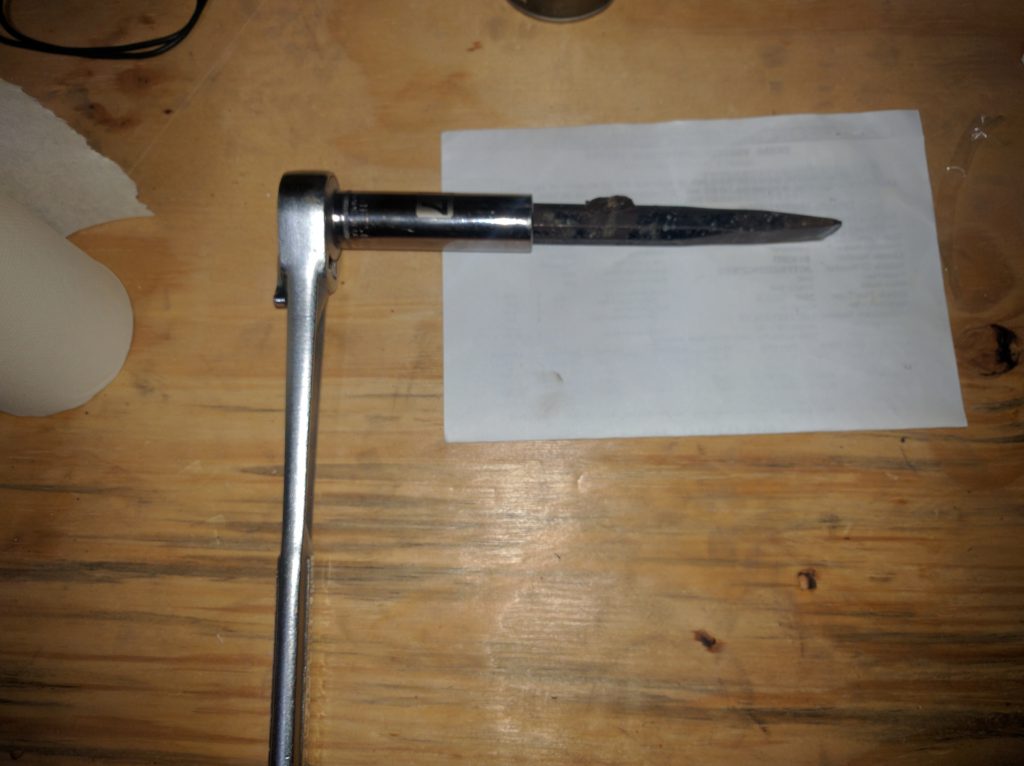Tonight I started to tackle the restoration of the brake system. My goals were simple, get the brakes disassembled so that I could evaluate all of the parts. Well, easier said than done.
My first challenge was removing the drums. Each drum is retained via 3 flat head screws. I tackled the right front wheel first and approached each screw with a standard (large) flat head screw driver – no luck. The screwdriver failed to turn any of the three screws and even though it was a very large screw driver, the blade was too small to grab the length of the slot. Instead the blade rotated slightly putting all of the turning pressure on the corners of the blade.
Since I didn’t want to strip the heads of the screws, I retreated to the internet for advice. There were plenty of videos and articles to refer to, but most seemed content to destroy the screw heads as long as the fasteners came out. Manual impact screwdrivers were popular options as were chisels. But each of these methods risked stripping the head. After speaking with my father for a while about the various options available to me, I decided to create my own tool that would fit snuggly in the slot and allow me to use a rachet to apply more rotational force while concurrently holding the tool in the slot.
The donor component for my tool was a beat up chisel that was in my drawer of chisels that had been donated to me somewhere along the way. It had a hex handle (perfect for mating with a socket), it was wider than the screw heads, and its blade was gnarly making its usefulness as a chisel minimal at best. With my bench grinder, I set out to form the tool I needed. I made multiple attempts at shaping the blade resulting in a tool that fit well. To make the blade fit, I notched the chisel until it was the correct length and then shaped the blade to arrive at the width that I needed. The shape of the wheel on the bench grinder initially resulted in a shape that was too tapered which allowed the tool to slip. So I reduced the taper using the side of the wheel and a little freehand work. The result is shown here.

Note the change in the taper at the end. While not a perfect rectangle, the shape was close enough to provide a solid lock with the screw slot and to distribute the turning force across the length of the screw. The fit is snug enough that setting the blade required a light tap with the palm of my hand to get it seated. While it won’t win any beauty contests, once fully inserted, the tool turned each screw out easily with no damage to the screw face.

The rest of my evening was spent trying to remove the drum itself, unsuccessfully. Most articles recommended beating the edge of the drum with a rubber mallet while rotating the drum. I tried this method without success. Some other guides recommended inserting a screw in a threaded hole on the face of the drum. The screw was intended to push the drum away from the backer, this method failed as well. Finally, I had hoped that I could accomplish the task with a gear puller. Unfortunately, my largest gear puller was just a little too small to grip the hub.
So, at the end of two hours, the only thing I had accomplished was removing three screws from the face of the front right brake drum.
